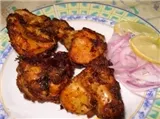Well - what a remedy for the disease unbelievable - There is no harm just drinking this water as a normal water, day to day.? Please pass this on to your family and friends
hello!!! just want to share this good information
Just cut 2-3 thin slices of lemon in a cup/container and
add drinking water so that it will become "alkaline water", drink it for the
whole day, just by adding drinking water further more.Take it as
drinking water everyday is good for everybody.
The surprising benefits of lemon!
I remain
perplexed!
This is the
latest in medicine, effective for cancer!
Read carefully
& you be the judge
Lemon
(Citrus ) is a
miraculous product to kill cancer cells . It is 10,000
times stronger than chemotherapy Why do we not
know about that? Because there
are laboratories interested in making a synthetic
version that will bring them huge profits.
You can now help a friend in need by letting him/her
know that lemon juice is beneficial
in preventing the disease.
Its taste is pleasant and it does not produce the horrific
effects of chemotherapy.
How many
people will die while this closely guarded secret is kept, so as not to
jeopardize the beneficial multimillionaires large corporations? As you know, the lemon tree
is known for its varieties of lemons and limes.
 You can eat the fruit in different ways: you can eat
the pulp, juice press, prepare drinks, sorbets, pastries, etc...
You can eat the fruit in different ways: you can eat
the pulp, juice press, prepare drinks, sorbets, pastries, etc...
It is credited with many virtues, but
the most interesting is the effect it produces on cysts and tumor. This plant is
a proven remedy against cancers of all types.
Some say it is very useful in all variants of
cancer . It is
considered also as an anti microbial spectrum
against bacterial infections and fungi, effective against
internal parasites and worms, it regulates
blood pressure which is too high and an antidepressant, combats stress
and nervous disorders.
The source of this information is fascinating: it comes from
one of the largest drug manufacturers in the world, says that
after more than 20 laboratory tests since 1970, the extracts revealed
that : It
destroys the malignant cells in 12 cancers
including
colon, breast, prostate, lung and pancreas The compounds
of this tree showed 10,000 times better than the product Adriamycin, a drug
normally used chemotherapeutic in the world, slowing the growth of
cancer cells.
And what is even more astonishing: this type of
therapy with lemon extract only destroys malignant cancer cells and it does
not affect healthy cells.
Institute of
Health
Sciences,
819
N. L.L.C. Cause Street ,
Baltimore , MD1201
 You can eat the fruit in different ways: you can eat
the pulp, juice press, prepare drinks, sorbets, pastries, etc...
You can eat the fruit in different ways: you can eat
the pulp, juice press, prepare drinks, sorbets, pastries, etc...



